
HELP SEEDS FULFILL THEIR PROMISE
One of my favorite quotes about seeds comes from writer-filmmaker-cum-social entrepreneur Kenny Ausubel who co-founded Seeds of Change with his wife Nina Simon in 1989. The seed- growing company’s mission, “to restore ‘backyard diversity’ into the food web through marketing organic, biodiverse heirloom seeds to gardeners,” continues to this day.
Around the same time that Ausubel was doing that, he was also helping to put together Bioneers, a non-profit group that holds an annual conference which, it says here, functions as a “hub of social and scientific innovations with practical and visionary solutions for the worlds’ most pressing and social changes.”
Their annual award-winning radio and audio series, “BIONEERS; Revolution From the Heart of Nature” is available free for the listening. For more than thirty years, the group has been an exceptionally joyous celebration of human ingenuity and creativity, connecting people with solutions and with each other.
[You might also want to check out the group’s website and audio | podcast series. (Click on the different-colored titles above.)]
Anyway, here’s the quote:
“Seeds carry life from generation to generation without end. Through the seeds speak the voices of the ancestors. Each time we plant a seed, we become ancestors for the generations to come.”
And isn’t that a beautiful vision?
One short YouTube video featured on the Bioneers organization’s purpose page is “Bioneers: It’s All Connected.” The clip, which was uploaded in 2019, is taken from a series called, “Seeding the Field: 30 Years of Transformative Solutions” that showcases the best moments of the Bioneers conference through the years.
WE ARE ALL A PART OF A PROCESSION
The way of seeing that Ausubel and his Bioneers talk about in the video resonates with one of the foundational mindsets held by various native peoples of Oceania. The traditional Oceanic ways of relating to the world around us are a part of our culture and part of who we are as people.
Feelings of connection to Life-Its-Own-Self are a large part of the meaning the ones who live in the Real Old-Style give to being human.
This way of seeing and the way of moving through the world that it engenders arises from a deeply felt connection to earth that humans can intuit, a connection to place and to every living thing in that place. The mindset gives us access to an energy that even modern sorts like us can tap.

This energy flows out into the world through our mouths and imbues our stories and poems and songs with tremendous power. It touches every action we make, no matter how ordinary, with magic and it can help us to shape the world around us into beauty.
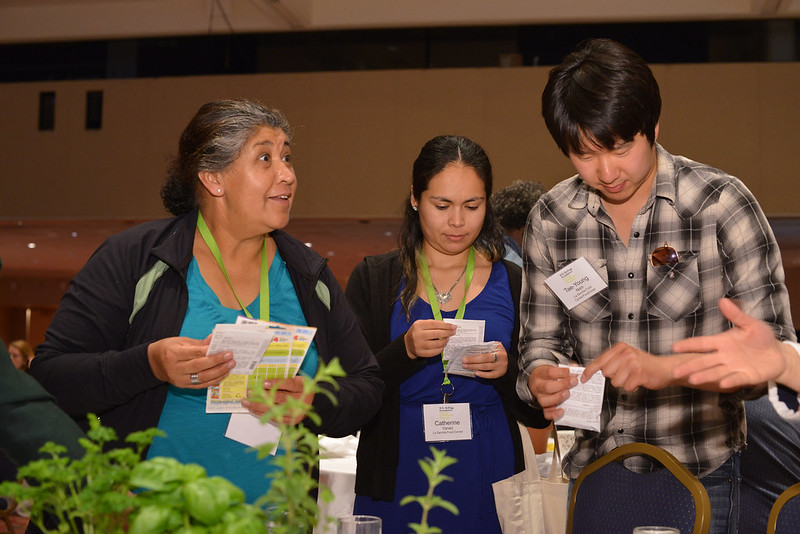
A TRIP DOWN MEMORY LANE
My grandfather was a home gardener dedicated to the rituals of food production as only someone who had raised up a large brood of young ‘uns with a bad-tempered, shrewd and sharp-tongued wife could be.
The thing is, I never did see Papa buy any seeds or plant starts for any of his gardens. I still remember all the jars of seeds lined up on a shelf in the old work shed.

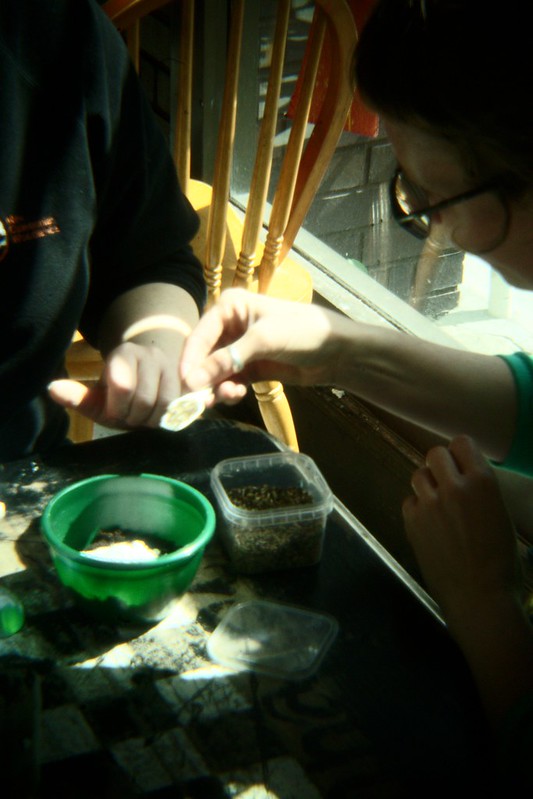
Inside and around the work shed, there was an abundance of simple digging tools and beat-up handmade wheelbarrows to haul stuff around. Assorted sharp implements and hand tools, an array of empty pots, and lots and lots of buckets and hoses and pipes were all neatly arranged in that shed.
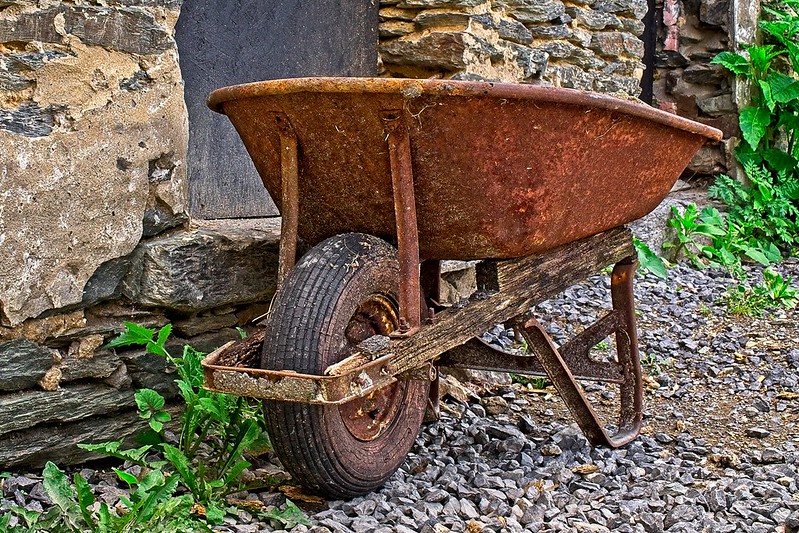
A STRAY THOUGHT: WERE HUMANS DOMESTICATED BY PLANTS?
The plants in Papa’s garden came from all over the world. They were brought here by voyagers, traders, refugees, colonists and other settlers who came here from other far-flung places.
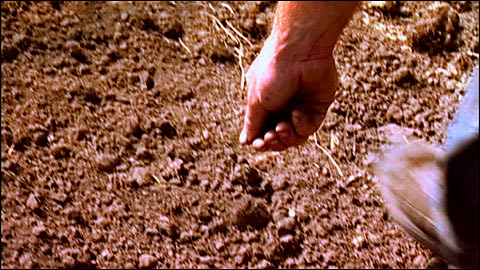
Throughout all of our story-making days we humans have lived, we know that this is one of the ways plants have spread all over our planet.
Sometimes I think the plants domesticated us humans so we’d carry them around to all of the new places we found. After all, plants use everything else they can to spread and propagate themselves, including insects, birds, animals, and even wind and wave action.
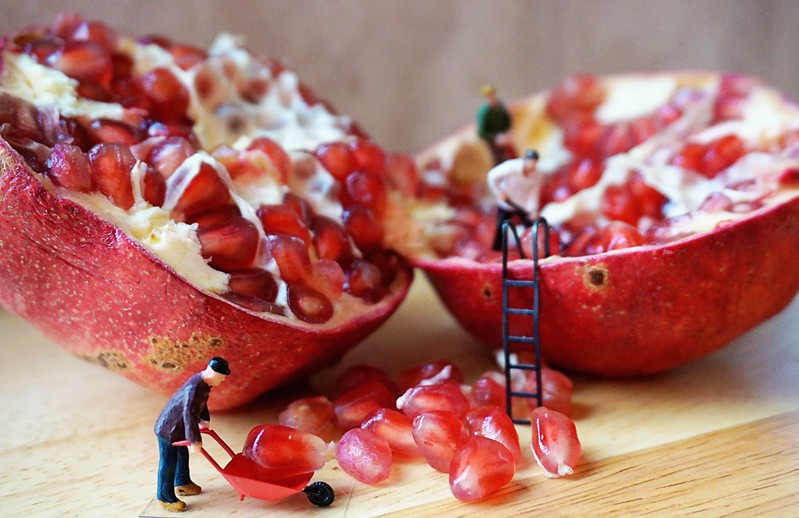
Hmmm….
That one’s a bit of a mind-boggle.
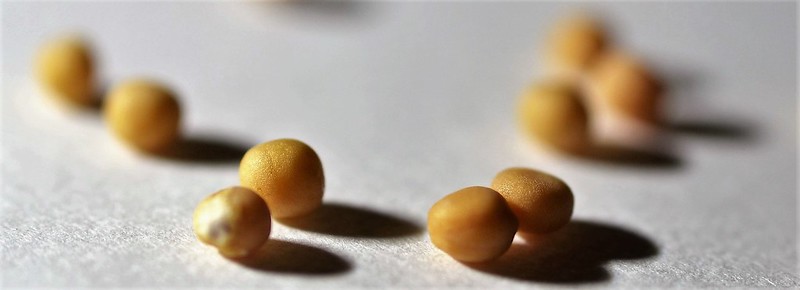
THE WORLD CHURNS
By the time I had the wherewithal and the inclination to do some home gardening my own self, the world my Papa knew was dead.
People were no longer saving seeds from the plants they grew in their gardens. Instead, there were all these mail-order seed catalogs with glorious pictures of lovely fields of plants. The seeds I got never seemed to do quite what I thought they were supposed to do.
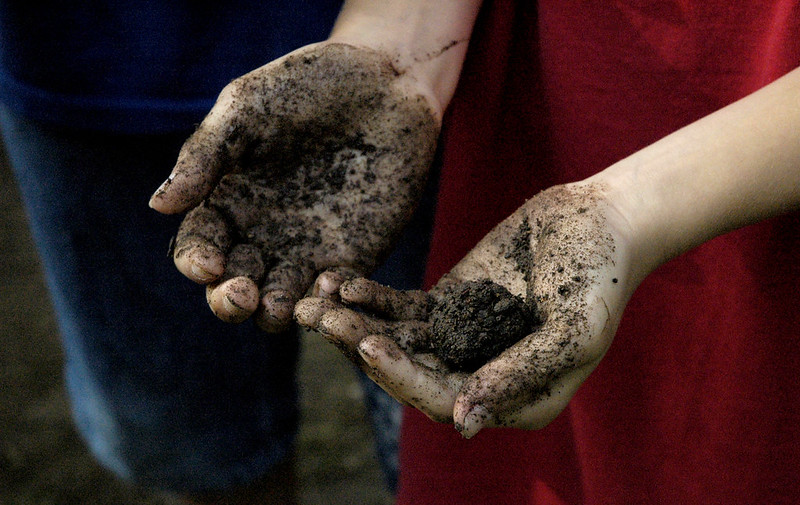
People no longer made their own dirt. You could buy way-better-than-dirt planting stuff as well as stuff to make new and improved dirt. These things all came in big old bags that took up a lot of room.
I also came to realize that the whole home gardening thing had become a model for “better living through chemistry” somehow, and it was actually dangerous for many living things to hang out in gardens.
There were all kinds of evil-smelling chemical warfare potions that decimated bugs and other living things and other mysterious (but very scientific) magic stuff that was supposed to pump up plant production to greater heights or something.
The Industrial Revolution had gone agrarian and I had not really noticed it.
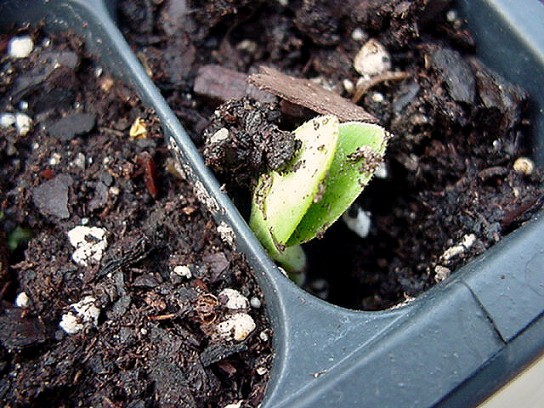
THE POLITICS OF SEEDS
The story about that is interesting. It is, predictably, the one about who gets to decide what we do with our resources. Surprise, surprise!
Starting in the mid-1800s, the notion that living organisms and their genetic material were resources that needed to be regulated and controlled started gaining ground. A series of government based programs, policies, offices and associations were formed to discourage everyday people from saving their own seeds.
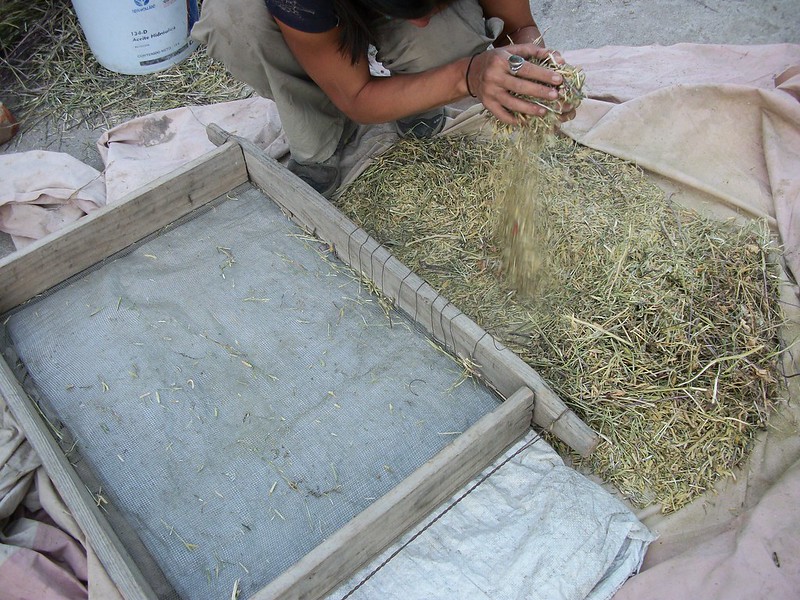
The bureaucracy that grew up around the plant-growing control effort spent a lot of time putting obstacles in the way of little farmers who just wanted to grow food and flowers and other useful things in the Real Old-Style. Similar stories in other countries played out in the same way. It also gave corporations and other non-living entities the ability to own the right to control what kinds of plants could and should be grown and (not so incidentally) allow these entities to charge rent on the use of the seeds that they controlled.
Similar stories in other countries played out in much the same way.
(Personally, I think the model the power dudes used was the fairy-tale where the farmer’s daughter conned the rich guy into believing that she could by golly turn wheat-straw into gold. Too bad Rumpelstiltskin wasn’t around.)
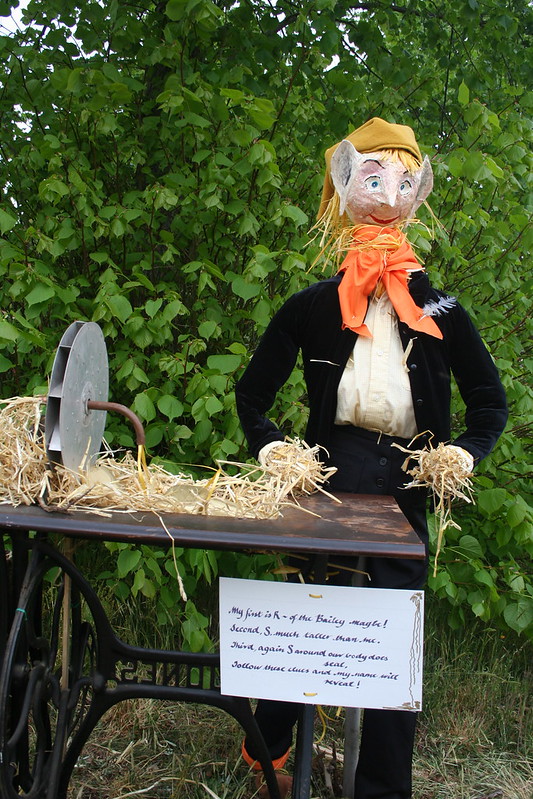
BIODIVERSITY IS MOTHER NATURE’S BEST DEFENSE
Even though the law only affected commercial farmers who now have to pay rent on the seeds they use to plant their fields, the trickle-down for home gardeners and other regular people was the loss of an enormous wealth of knowledge and cultural practices that helped ensure the biodiversity of our food web.
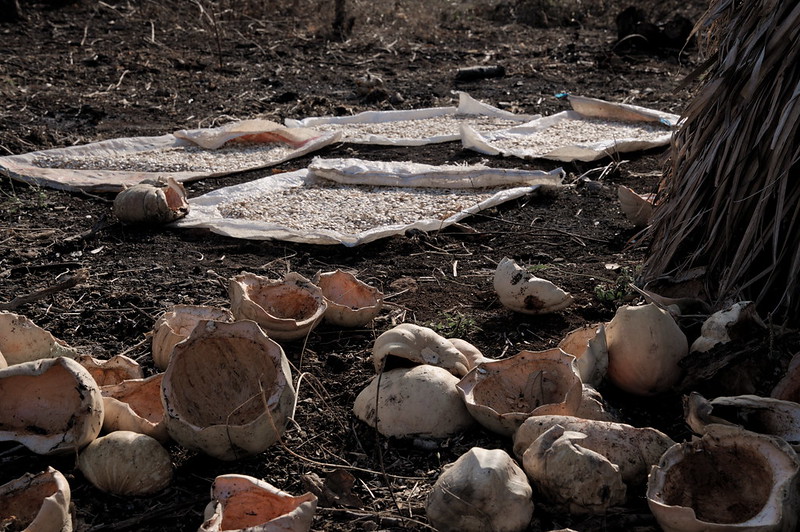
Think “Irish potato famine.” That’s the go-to model for why it is a bad idea to grow just one iteration of any important food crop.
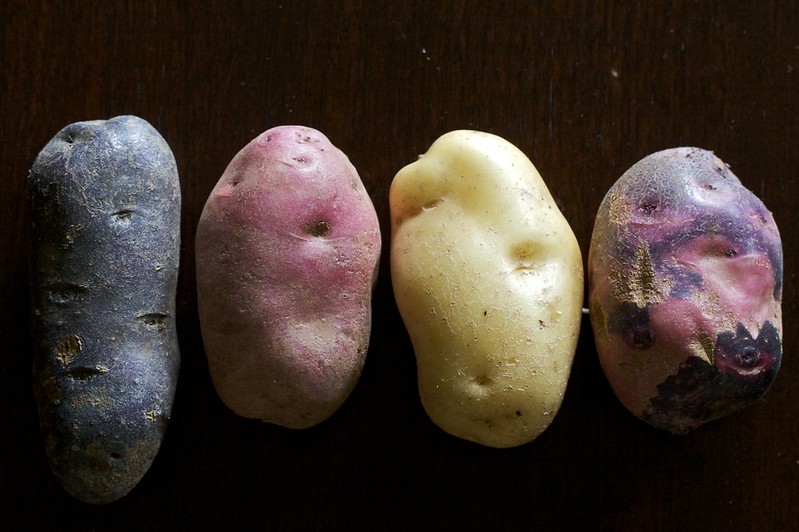
Scientific studies made since the power move to take control of the world’s seed stocks have shown that the commodification and patentability of seeds was responsible for the loss of countless varieties of plants. Some of these studies estimate that we’ve lost close to 75% of the different iterations and variations of the plants we used to grow, mostly because we did not save the seeds. ARGH!
Instead of millions of people all over the world saving seeds and helping the plants they grow to adapt to their specific local conditions, in the intervening years since the paradigm-shift, the places where we can get seeds for growing the plants we need to live have dwindled down to a few hundred.
BIG IDEAS ARE GREAT, BUT WHEN DO WE EAT?
Once the effects of the decision to turn food and other useful plant materials into gold mines was understood, there were all kinds of fix-it things (also mostly government-sponsored).
Some of the fix-it things are mighty impressive, like scientifically engineered seed vaults like the Svalbard Global Seed Vault that opened in 2008 in Svalbard, Norway and the National Center for Genetic Resources Preservation located in Fort Collins, Colorado.
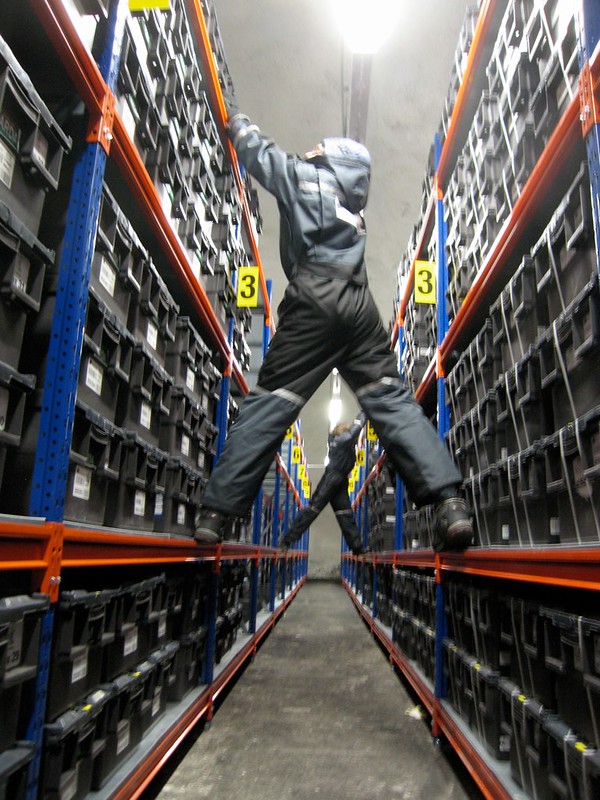
My reaction when I encounter the stories about the fabulous collections of seeds the human race has got stashed in case of the Apocalypse always seems to come down to, “Wow! That’s awesome! When do we get to play with those things too?”
My own gut-feeling about all that is that if the world blows up, how the heck are we going to be able to break into those temperature-controlled, ultra cool seed vaults? It’s not a gardening shed, ya know.
To get an idea of the variety and scope of the worldwide efforts to encourage seed biodiversity, click on the button below.
It will take you to an 2020 overview by writer Katie Howell titled “27 Organizations Working to Conserve Seed Biodiversity.” The list includes initiatives and efforts by many good people to help work on the problem of mitigating the rapidly shrinking inventory of plant resources around the world and to improve on what we’ve got left. Mostly these are assorted seed libraries, seed banks and lots of educational efforts as well.
Like the seed vault things they are magnificent. Looking over them, however, I am mostly stymied by what (besides throwing money at them) I could do to help their efforts.
EVERYDAY PEOPLE DOING EVERYDAY THINGS
Fortunately, there have been many people like Kenny Ausubel and other deep-thinking sorts who have started organizations that are working at a more grassroots level to encourage the resurrection and revitalization of the practice and process of developing diverse home-bred, locally and regionally specific seed varieties.
These varieties are more likely, over time, to become adapted to local and regional changes in climate, incoming pests and brand-new diseases, improved growing practices and technological advances as well as rising energy costs or space limitations.
Part of that process of local adaptation comes down to saving and sharing seeds. The people who are growing plants for the seeds live with those same changes and environmental conditions. They have an incentive to work on preserving or encouraging plant characteristics that can deal with them.

Founded in Minnesota in 1975 by husband and wife team Diane Ott Whealy and Kent Whealy, they now are based on 890 acres in Winneshiek County, Iowa at Heritage Farm.
Along the way the Whealys and their crew have created a network of more than 13,000 members. Among the members, the Exchange grows over 20,000 heirloom and heritage varieties that do well in a wide variety of different regions around the world.
This 2015 YouTube Video, “Seed Saving Advice to Beginners,’ is an introduction to their award-winning book, THE SEED GARDEN BOOK: The Art and Practice of Seed Saving, which is now in its second edition. The book was edited by Lee Buttala and Shanyn Siegel.
If you are not up for a whole book about saving seeds, you might want to click on the button below for a quick tour of hacks for doing that very thing by the online magazine Modern Farmer. The post it takes you to is titled, “SEED-SAVING 101: Ten Things to Know If You Want to Start Saving Seeds.”
Here’s a poem:
SOWING SEEDS
Here they are,
Just hardened dried bits of defiance,
Tightly holding on to the memories of
Old stories lived through ages past
Reiterated again and yet again.
The dreams of glories
And splendid harvests come and gone.
Genesis encapsulated
In tiny little bundles of promises,
Whispering, urging me to make
Yet another leap of faith,
One more time.
Take the chance, they whisper.
One more time, they sigh.
The fecund earth stands ready and
The world holds its collective breath once more.
Waiting for the seed’s release
Just as the seed yearns towards its becoming.
A still point at the intersection of choice.
Once again the seed hits the dirt
And the story can continue.
And every time, without fail, I do recall
The snarling words of Konstantinos,
That old recalcitrant Greek rebel-poet:
“What didn’t you do to bury me…
But you forgot that I was a seed.”
OPA!
By Netta Kanoho
Header Photo credit: “Seed Saver” by Taryn Domingos via Flickr [CC BY-NC-ND 2.0]
……
SOME OTHER POSTS TO EXPLORE:
(Click on each of the post titles below and see where it takes you…)
……
Thanks for your visit. I’d appreciate it if you would drop a note or comment below and tell me your thoughts.
12 thoughts on “HELP SEEDS FULFILL THEIR PROMISE”
As a bit of an eco-warrior, I have known about Seeds of Change for many years, but have not come across Bioneers before. So it was great to learn about Bioneers and the great work that they are doing. I do grow a lot of my own vegetables and often feel that many people have lost their connection with the land we live on. Biodiversity does play a big role in maintaining and cultivating our crops and seeds.
I love the videos you have shared. I do save my own seed as well, which doesn’t always work, possibly because it came from GMO seeds. I will read the Seed Garden Book as I am sure it will show me better ways to save seeds. This is an awesome post.
Thanks for your visit and for sharing your thoughts, LineCowley. The Light-of-My-Life and I have been playing with seed-saving for only a few years now. It can be frustrating.
Since we have a little garden which is open-pollinated, we tend to get varying results when we replant the seeds we save. That’s the problem with growing several different varieties of certain plants all together in a small space. They do get cross-pollinated. (We’re also still learning how to dry the things properly as well and learning more about when a seed is really ripe. Fun stuff!)
The biggest plus for us is that Hawaii doesn’t have a “winter” season where everything dies back all at once. Everything keeps growing and growing and growing. It means we have a heck of a lot more chances to try things again and again. Plus, we aren’t too picky about whether the produce in our garden looks like they are ready to debut in a three-star Michelin restaurant.)
Some plants grow once for us and never do it again. ARGH! One time we got these really great shiso plants (Perilla frutescens) and some jamaica (Hibiscus sabdariffa) that I have tried and tried to regrow. No luck. Rats!
And then there are these really cool tomatoes that we call Makena tomatoes which we got from friends who have kept growing them since the days when there was a hippie camp at Big Beach in Makena on Maui. Those guys always come back. Yay!
I’m glad you enjoyed the post.
Please do come again.
A gardener, I am not. However, I do find this article fascinating. I like the idea of saving seeds to replant them for new crops. I don’t like the government telling us what to do, what to plant, etc. Seeds of change sounds like a great organization.
I had to watch the Bioneers video twice because I just wasn’t getting it. I still don’t know what that has to do with saving seeds and re-sowing them. Honestly this post was a bit over my head, even though I found it interesting.
Thanks for the visit and for sharing your thoughts, JarieLyn. I do appreciate it. I’m glad you found the post interesting.
I included the Bioneers video, I think, because they are also fostering and nurturing “seeds” — the seeds of ideas that could change the world.
(No worries if you had a time making the connection. I’m a poet. It’s our job to confuse people!)
Please do come again.
Great article about seeds.
I never knew there existed such a thing as seed vaults. Perhaps I had a blind-eye turned to this sort of thing because it was so long ago that they made the switch. But in reality, the governments that controlled the farmers and their seed keeping makes sense now.
I was unaware it dated back to the 1800s also.
Jeremy, thanks for the visit and for sharing your thoughts. I’m glad you found the post interesting.
Please do come again.
This is a very enjoyable read Netta discussing how to help seeds fulfill their promise, I am sure that many will benefit from the philosophy you promote here as the weather is warming up and folks are heading out to till and work their gardens with the coming of the spring growing season.
I’ve always thought it interesting that the seed itself has to die, to degrade and grow into something else, for it to bring forth its yield! That is profound Biblical imagery!
I especially love the story how your grandfather provided for his family through a garden without ever buying seeds or started plants. That takes some commitment that many would be unwilling to submit to in todays’s culture.
Thanks for your visit and for sharing your thoughts and feelings, Joseph. I do appreciate it and am glad you found the post interesting.
Please do come again.
Hi Neta –
This article was a fantastic read. Increasing the biodiversity of our seeds is often an overlooked topic. The paragraph about how we lost 70 percent of seed diversity is eye opening and sad at the same time.
I am very certain there were advocates at the time urging corporations and government to reconsider there decisions. However, it was not meant to be. In my mind, that is likely what has accelerated the quest for genetically modified plants, along with the changing climate.
Prior to reading this article, I was aware of Svalbard Global Seed Vault. It is important to humanity for obvious reasons but only scientists need apply.
Wait, seeds in the vault are not natural? Or is there a combination of natural and genetically modified seeds?
Keep sowing the future.
G
Godwin, thanks for your visit and for sharing your thoughts. Myself, I cannot speak to whether the seeds in the seed vaults are “natural” or “genetically modified” or a combination or whatever. I am not a scientist. I am just a gardener.
Still, we gardeners have been playing with plants (and with each other) for a very long time now. Since I am not a commercial gardener, I do tend to favor grass roots efforts and the continuations of traditions fostered and employed by just regular folks. For me, at least, they make a lot of sense and work better.
Please do come again.
Hi
A very comprehensive article. I like a beautiful garden with a variety of plants. However I don’t like doing garden myself. The only time had to deal with seeds its only when I was helping my daughter with her project of Recombinant DNA. Very fascinating project indeed.
One tricky thing with your article is that its written in a poetic form. If you not good in reading and interpreting poems, you miss a lot of message or the gist of the poem. Most of it is talking past me. I wish I could go back and refresh my poem reading and interpretation skills.
Structure and images used in your article are superb
Thank you for sharing
Richard
Thanks for the visit and for sharing your thoughts, Richard. Your comment about the post being “written in a poetic form” makes me smile. I’m sorry; I’m afraid I AM a poet. It’s the only way I know how to write. Hee!
Please do come again.